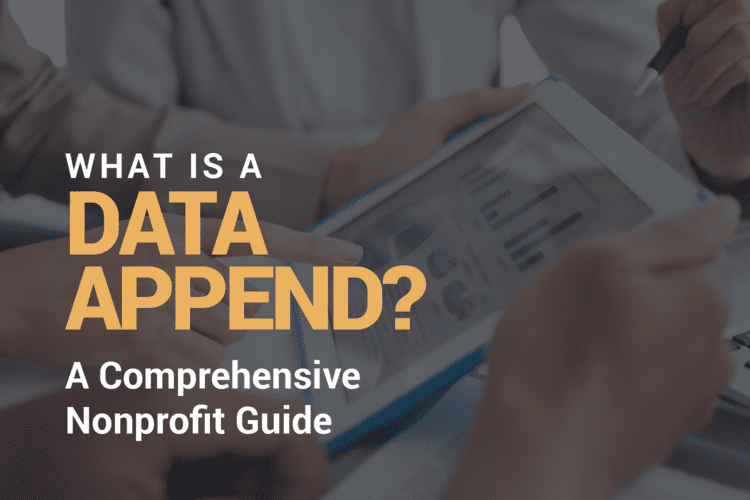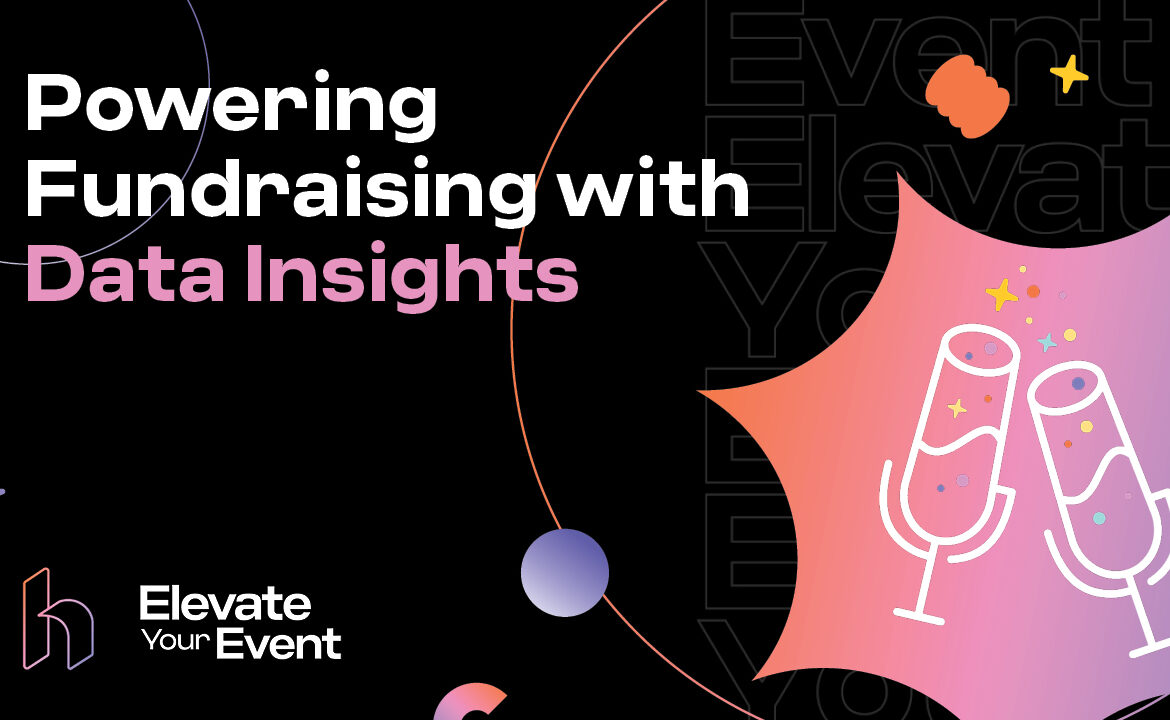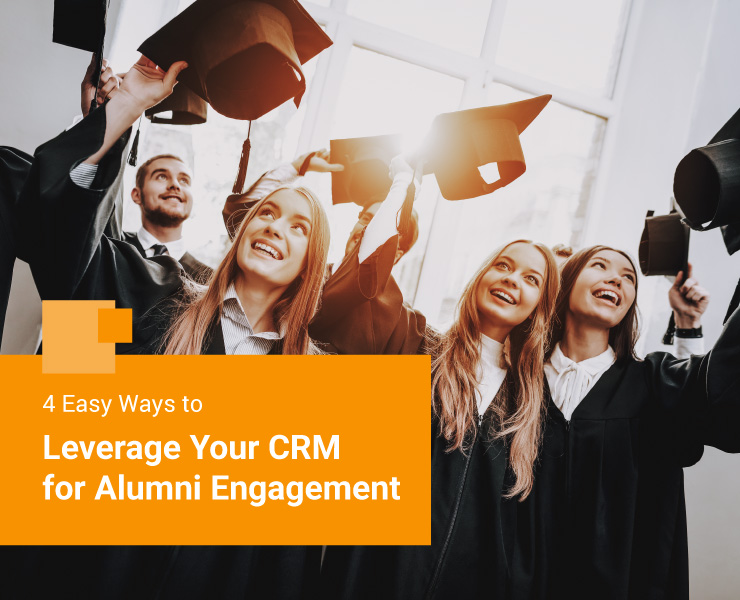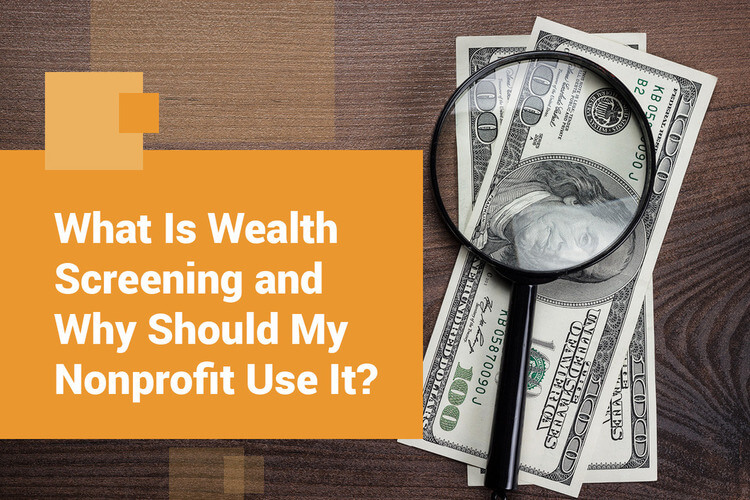Developing comprehensive donor profiles can be the key to elevating your fundraising efforts. But, many nonprofits do not collect employment information from their supporters. That’s where ...
What Is a Data Append? A Comprehensive Nonprofit Guide
As a nonprofit professional, you likely interact with data daily. From managing your weekly volunteers to gathering donor communication preferences, your nonprofit needs to work with clean, complete data points to raise ...
What is Peer-to-Peer Fundraising? A Fundraiser’s Mini Guide
In the context of alumni fundraising, this means that it can be much more effective to tap into alumni support networks to facilitate fundraising on your organization’s behalf rather than reaching out directly. This strategy, known as peer-to-peer fundraising, also benefits your organization by connecting current members to alumni and building life-long relationships.
In this guide, we’ll discuss the basics of peer-to-peer fundraising and determine how you can incorporate it into your organization’s strategy to experience alumni fundraising success.
Peer-to-Peer Fundraising Basics
Peer-to-peer fundraising, also known as P2P fundraising, is a strategy that asks individual, volunteer fundraisers to create and promote donation pages for your cause. It includes a personalized and social approach where individuals facilitate and advertise your fundraiser.
Typically, organizations will recruit supporters with large networks to launch personalized campaign pages. Then, these supporters will reach out to their friends and family to collect donations on your behalf. Fundly’s donation guide highlights peer-to-peer fundraising as an effective strategy for the following reasons:=&0=&
- Inherent trust. Peer networks of friends, families, and coworkers all have common ground with your supporters already. While building this inherent trust with new donors typically takes time, you can earn donations faster by leveraging these existing relationships.
- Instant access. It’s easier to ask for donations from people who are in your immediate vicinity or with whom you keep up regularly. Supporters don’t engage with organizations as much as they do with their networks, so using these relationships to your advantage can increase reach.
- Shared values. Often, friends and family agree on charitable causes to support. This makes inviting them to a meaningful event, asking for financial support, or simply raising awareness much easier.
Because peer-to-peer fundraising relies on supporter networks to launch and sustain funding, organizations don’t have to worry about selecting the perfect fundraising product to sell or ironing out the details of a fancy gala.
Although not mandatory, many peer-to-peer fundraisers are combined with popular events such as charity runs, bike-a-thons, or even celebratory birthday fundraisers. That’s the great part about peer-to-peer fundraising—it’s flexible enough to adapt to any cause or event.
Peer-to-Peer Fundraising vs Crowdfunding
Although similar, peer-to-peer fundraising and crowdfunding have distinct differences worth defining. Crowdfunding involves an organization creating a centralized donation page with a broader, more direct public appeal. These campaigns can also be rewards-based and are usually conducted with a strict timeline.
On the other hand, peer-to-peer fundraising campaigns involve a more network-driven approach in which supporters create their own online fundraising pages to share with friends and family. This makes peer-to-peer fundraising a perfect fit for tight-knit alumni networks that are more engagement or community-focused.
How to Launch a Peer-to-Peer Fundraiser
Refer to these five quick steps for launching your peer-to-peer fundraiser:
- Set a financial goal by clearly outlining what you aim to achieve. This should include a financial target that is informed by your previous fundraising campaigns and donor analytics.
- Set up your main campaign page to prioritize user-friendliness, customization options, and integration capabilities with social media and your existing donor management system.
- Recruit supporters who will serve as your campaign’s initial fundraisers. Equip them with fundraising pages, tips for sharing their stories, and strategies for reaching out to their networks.
- Promote and launch your fundraiser by hosting an event or announcing the campaign online. Use multiple channels such as email marketing, social media, and your organization’s website in addition to individual donation pages.
- Update and thank your supporters by keeping them in the loop when you’ve reached fundraising milestones. Express gratitude during and after your campaign for every donation, no matter the size.
As you can see, pulling off this fundraising idea depends on your ability to reach social networks. That said, you need to do everything you can to make sure your peer-to-peer fundraising software and campaign materials are ready to use once the campaign goes live. This may mean testing technology and resolving issues proactively so that donors can experience a hassle-free donation process.
Peer-to-Peer Alumni Fundraising Best Practices
There are a few peer-to-peer strategies you can use to really harness the power of your alumni’s reach and impact. Implementing these best practices will give your campaign an extra edge to go above and beyond the basic peer-to-peer fundraising steps:
- Engage passionate alumni leaders. Refer to your CRM to identify and ask passionate alumni volunteers to take charge of your peer-to-peer fundraising efforts. Equip them with the necessary information such as an example fundraising page, an explanation of where the funds will go, and suggested promotional channels.
=&10=&
How to Power your Fundraising with Data Insights
In this episode, AlumniFinder team members Jennifer Cole and Chris Boyette provide their expert insights on how to harness data for effective engagement. With AlumniFinder’s expertise as a trusted provider of comprehensive alumni database solutions for nonprofits and educational institutions, this panel discussion covers the importance of high-quality donor data for fundraising success.
Join us as we explore strategies for personalized communication, database management, and the significant impact of clean data on campaign performance. This discussion provides valuable guidance for nonprofits looking to optimize their fundraising efforts and strengthen connections with donors.
Some topics covered in this discussion include:
- The importance of maintaining accurate data and correcting data prior to a campaign.
...
4 Easy Ways to Leverage Your CRM for Alumni Engagement
However, if your staff members are stretched thin or if your alumni data isn’t organized, it can be challenging to connect with the thousands of unique individuals that make up your alumni pool. This is where your CRM comes in! Your CRM can be a highly effective tool for engaging alumni if you know how to use it to its full potential.
We’ll cover four simple strategies you can use to boost engagement with your CRM:
- Use centralized data to get the full picture of your relationships.
- Easily personalize outreach by creating alumni segments.
- Streamline event planning and fundraising.
- Track and manage relationships to build alumni networks.
These tips will help you build strong and lasting relationships with these important members of your community. Every CRM is different, so feel free to tailor these strategies based on your CRM’s specific features.
1. Use centralized data to get the full picture of your relationships.
When data is siloed in a variety of disconnected systems, it’s extremely difficult for your staff to get an accurate picture of your alumni and how they want to interact with your university. Consolidating all of your data into your CRM, however, gives you a centralized source of truth where you can quickly and easily gain insights about your alumni.
By organizing your data into comprehensive constituent profiles, you can get a better understanding of who your alumni are and what matters to them. For example, Redpath’s guide to Salesforce Education Cloud explains how the Salesforce CRM gives you a 360-degree view of your alumni and all the ways you’ve interacted with them.
In each profile, you can holistically see your alumni’s:
- Contact information and preferences
- Involvement history
- Donation history
- Current career
- Professional and personal interests
- Former on-campus activities
- Professional and personal affiliations
This comprehensive view will help you personalize communications, cater to individual needs, and offer your alumni the most relevant opportunities for involvement.
For instance, let’s say you’re looking at the profile of a woman named Marlene to decide if she’d be a good fit for your student mentoring program. From her profile, you see that she graduated summa cum laude in 2003 with a degree in Biochemistry and now works as a research scientist at a hospital. You also see that she donates monthly, spoke on a career development panel in 2021, and currently has a niece attending your university.
Based on this information, you can conclude that she may be interested and reach out to her right away.
2. Easily personalize outreach by creating alumni segments.
To successfully encourage alumni to attend events, sign up to volunteer, and donate, your outreach needs to be tailored to their unique interests. Fortunately, you can use your CRM to plan, send, and track personalized communications across all of your marketing channels.
The key to this personalization is creating the right segments of alumni in your CRM. Use the following segments as a starting point:=&0=&
- Program and graduation year: Segments for each graduation class and individual program of study help you quickly send information about class reunions and program-specific events to the right people.
- Career field: Any time you host a career event or a staff member is looking for a volunteer mentor, you’ll likely want to target alumni in specific fields. These segments can also be useful for tailoring messages and invitations to professional interests.
- Engagement level: Create segments based on individuals’ overall level of engagement. Then make smaller groups pertaining to donations, event attendance, and volunteering habits.
If you’re looking for more ways to personalize outreach, consider branching out with CRM integrations and add-ons that can boost your marketing capabilities.
For example, you might add Marketing Cloud to your Salesforce instance to access intuitive email automation features. Or if you need to engage younger alumni, consider investing in a text marketing app that integrates with your CRM and enables you to try new texting strategies. Tatango’s higher education texting guide suggests using texts to send reminders about events, announce alumni meetups, and advertise university giving days.
As you try out new segmentation and personalization strategies, you can also use the reporting dashboards in your CRM to monitor your success. Comprehensive reports and data analysis tools can shed light on what’s working well and what could be improved.
3. Streamline event planning and fundraising.
Whether you’re planning a reunion or any other alumni event, your CRM can help you keep everything organized and efficient. Track event invitations, RSVPs, and attendee survey responses all in one convenient place. Manage your event promotion by tracking the announcements you send and social media posts you make.
Plus, you can use the data in your CRM to plan better, more engaging events and fundraisers based on alumni interests. Compile data from post-event survey responses to see which aspects of the event were most popular and source ideas for new activities for future events.
In terms of fundraising, you can use your CRM to streamline donation tracking and send tailored fundraising appeals based on alumni data. For example, after thanking and
What Is Wealth Screening and Why Should My Nonprofit Use It?
However, the fundraisers are in a bind. Reaching out to everyone in their database would effectively push the campaign public before raising the necessary base funds. On the other hand, they don’t have the time or resources to manually go through each alumni profile in their database and decide who their wealthiest donors are.
Luckily, nonprofit wealth screening can help. This guide will explore the fundamentals of wealth screening for nonprofits, answering questions like:
- What Is A Wealth Screening?
- Why Should My Nonprofit Use Wealth Screening?
- What Are Wealth Screening Best Practices?
No matter your fundraising goals, a wealth screening can help you earn more. Let’s learn more about the process and how your nonprofit can get started.
What Is A Wealth Screening?
Wealth screening, a crucial element of the prospect research and fundraising process, helps nonprofits identify and target prospective and existing donors with the greatest capacity to give.
Nonprofit wealth screening tools leverage public record data, proprietary philanthropy databases, and data-driven algorithms to determine an individual’s potential for future giving based on a combination of their past information (such as giving history) and current assets.
What Is the Difference Between Wealth Screening and Prospect Research?
Wealth screening is an element of prospect research. While wealth screening focuses on financial information, prospect research also incorporates philanthropic information to determine a person’s willingness and capacity to give. If you want to narrow in on concrete information about a potential donor’s financial capacity to give, wealth screening is the right choice.
When conducting a wealth screening, there are the financial indicators that best predict a donor’s giving behavior:
Business affiliations. Wealth screening can reveal information about donors’ careers, employers, and salaries.
Stock ownership. Not only does stock ownership give you an idea of a donor’s relative wealth and ability to give, but it can also be a method of giving. As a registered 501(c)(3), you can accept donations of stocks and securities in addition to typical cash giving.
Home value. Real estate ownership can be an excellent indicator of wealth. In fact, homeowners with






